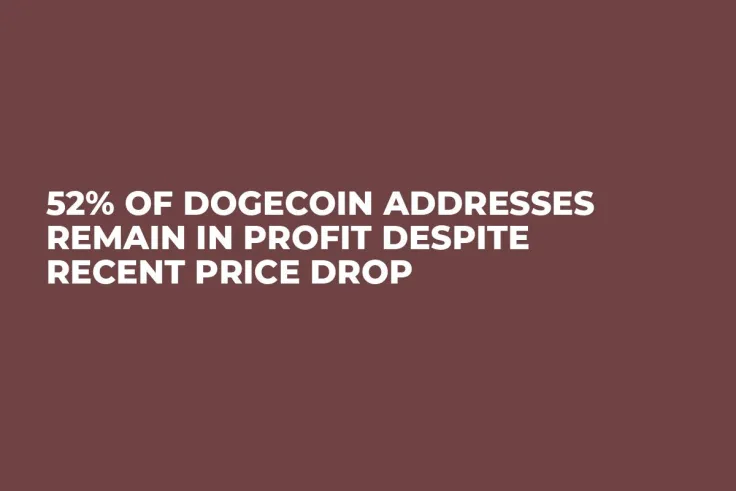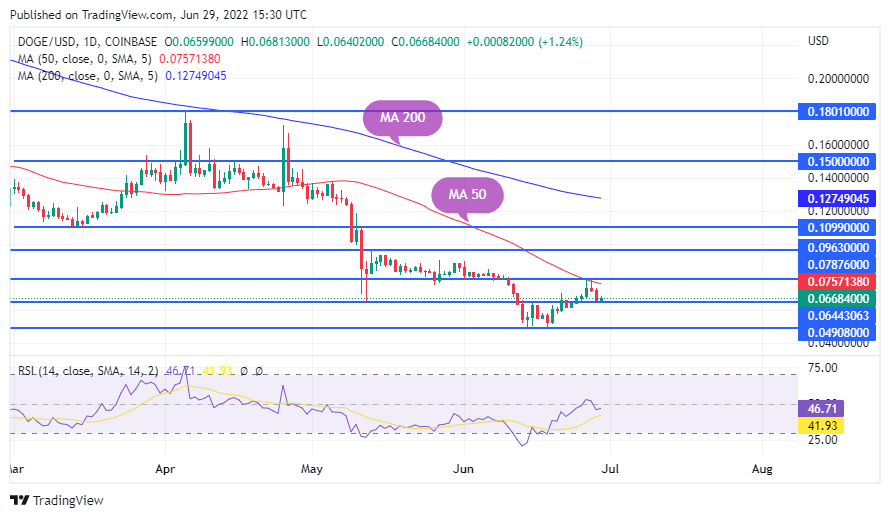
Disclaimer: The opinions expressed by our writers are their own and do not represent the views of U.Today. The financial and market information provided on U.Today is intended for informational purposes only. U.Today is not liable for any financial losses incurred while trading cryptocurrencies. Conduct your own research by contacting financial experts before making any investment decisions. We believe that all content is accurate as of the date of publication, but certain offers mentioned may no longer be available.
A total of 52% of Dogecoin addresses are "in profit’’ on their investments at a current price of $0.06, according to data from IntoTheBlock. This comes despite the fact that Dogecoin remains down nearly 90% from its May 2021 peak of around $0.73.
IntoTheBlock's In/Out of the Money gives the percentage of addresses that are profiting (in the money), breaking even (at the money), or losing money (out of the money) on their positions at the current price. The In/Out of the Money indicators also look at unrealized profits and losses for addresses that are holding the cryptocurrency currently.
Currently, this indicator shows that 52% of Dogecoin addresses are profiting, 46% of the remaining addresses are at a loss, and barely 2% are breaking even. Compared with Bitcoin and other altcoins, Dogecoin seems to be holding well in this regard.
Dogecoin price action

Dogecoin rebounded from lows of $0.04 on June 18 and recorded six out of nine days of positive price action. The bears sold near the daily MA 50 at nearly $0.077 on June 27. At the time of publication, Dogecoin was changing hands at $0.067, down 4.01% in the last 24 hours and up 6.21% in the past week, per CoinMarketCap data.
If buyers attempt again to push the price above the MA 50 at $0.077, DOGE might rally to $0.09 and then attempt the psychological $0.10 level.
On Wednesday, Bitcoin temporarily dipped below the $20,000 level as the market was still being affected by a number of factors, such as macroeconomic troubles with cryptocurrency firms. A recession in the United States and abroad is feared as long as inflation continues to be high and central banks try to raise interest rates further.
 Alex Dovbnya
Alex Dovbnya Dan Burgin
Dan Burgin Arman Shirinyan
Arman Shirinyan Denys Serhiichuk
Denys Serhiichuk